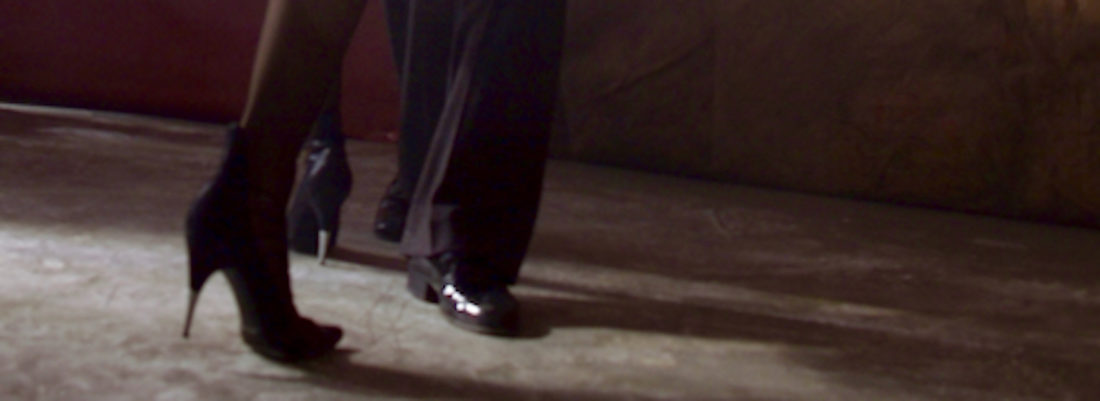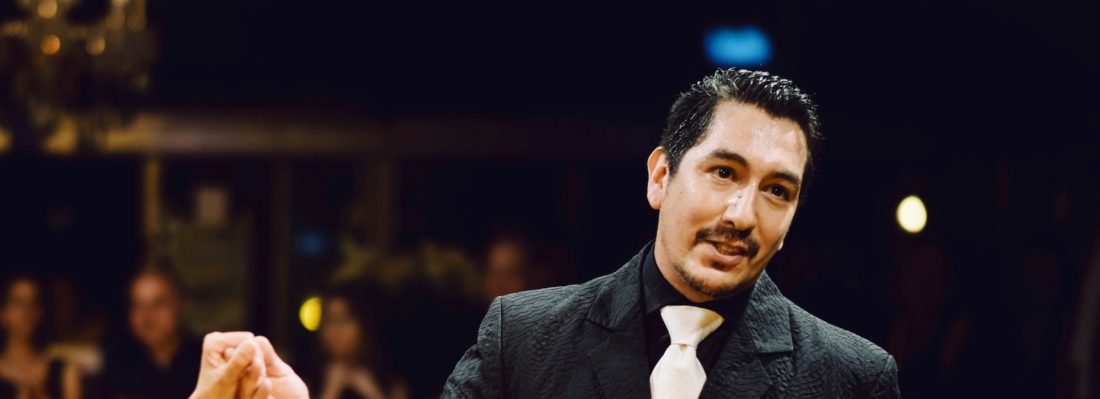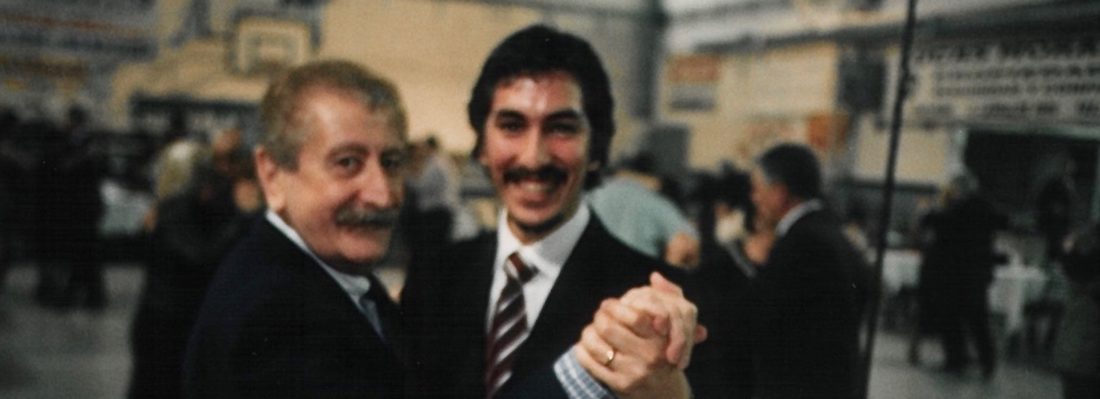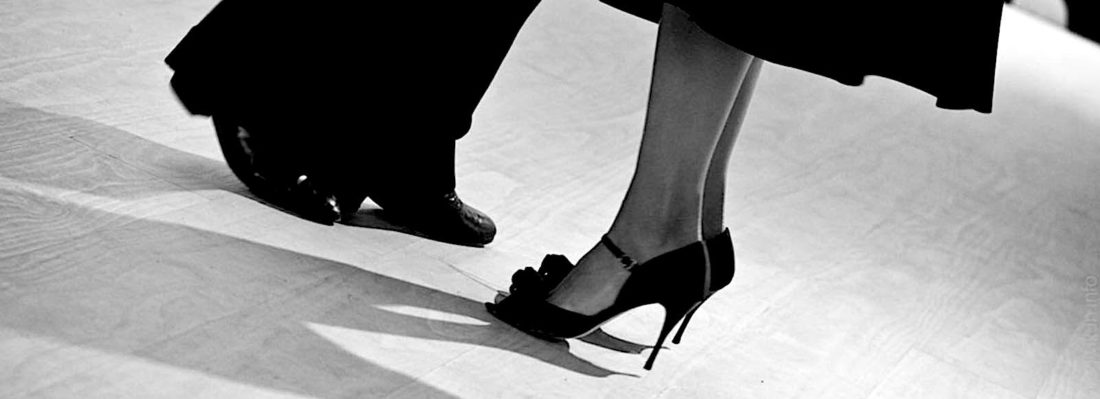Go to dance, come to dance
This article sees the Tango Argentino and the Milonga as a cultural asset and heritage to which I feel committed by passing them on as I received them and not simply as a dance form and place for a dance opportunity.
The place where lovers of the Argentine tango meet, the “milonga”, simply to be equated with a dance event is wrong and incomplete. Rather, it is a social event. The tango lives in it in various forms of expression. In addition to dance, it is a place of encounter, conversation and perception. Sometimes it even serves as a refuge when a person wants nothing more than to drift in the melancholy atmosphere of the Milonga.
As soon as the tango is perceived as a cultural event, the milonga transforms into a space that offers a rich range of behaviors that cannot be reduced to dancing together. We also welcome those who do not dance, but who enjoy cultural events accompany them, as spectators, conversation partners and friends. You can watch quite easily other people dancing, listening to music with others or having conversations in the atmosphere of the tango.
How can I signalze that I want to dance this song?
When a lady or gentleman visits for the first time a milonga (see above) as a tango beginner, they will quickly come across special or alien behaviors and codes among the experienced dancers. You will very soon feel the need to develop a sense for this special form of communication. In order not to look awkward when dealing with the milonga, various customs and rules must be recognized, understood and learned. Many of these customs are different and seem more sophisticated than the everyday idea of good manners.
To understand them, you have to know their own cultural environment and hide their treasure in the context of their history. This story makes sense of the perhaps strange rules and customs that have lost none of their validity today.
I will try to explain this sense.
In the cultivated, traditional Argentine tango, the men challenge the women. The obligation for gentlemen is to do this in a way that goes unnoticed by the public. This form of request opens up the room for the lady to make a private promise or refusal without pressure. The welfare or woe of the request is placed in the hands of the lady – she is free to reject or accept it. Out of this developed in Argentina the request by means of “Cabeceo”, which has since acted as privacy protection within a couple and has established itself as a legitimate form of the request to dance.
How does the “Cabeceo” work?
The translation for “Cabeceo” is “to nod with the head”. When a gentleman wants to dance, he looks for the look of a lady with his gaze. He would like to dance this tanda (this series of three to four danceable songs – more on that below) with her. If this lady also wants to dance with him, she looks at his eyes. As soon as her gaze finds the man’s gaze, he can ask her. With a small nod, the head nod, he signals the lady that he wants to dance with her. To accept the offer, the lady also says “yes” with her head, while her eyes are still connected. So the request is accepted. Until the request is completed, the lady remains in her seat (or if she has stood during the request) and lets the man come to her. She only gets up when she is absolutely sure that she is the intended lady, which is sometimes not quite obvious with a full milonga. It is a good practice to always respond calmly to any accepted request. The invitation ends with a hug on the dance floor. A rejection of the request does not need a special sign and no answer: the lady simply does not return the gaze to the man’s cabeceo. Thus, the gentleman does not receive a direct, exposing rejection, and the lady can vote without compulsion.
This process is a very important ritual. The Cabeceo is a milonga code that has transformed the tango into a place of noble interaction between the sexes.
When is the right time to prompt with Cabeceo? The invitation is an essential part of the dance scene and also follows a rhythm in the course of the evening. In a milonga there is a clear structure of how the order of the songs is laid out. Two moments are crucial for this: the first is the “Tanda”, i.e. a series of three or four danceable songs, which usually come from the same orchestra or follow a similar basic mood. The Tanda makes it possible to dance. During the evening, at least three dance music styles are played in the form of tandas: Tango, the Tango-Vals and the Milonga. In Buenos Aires it is also customary to play a tanda with a different musical direction once a night. As a new phenomenon of the last years, for example, Chacarera is played, while swing, salsa, rock’n roll and others can still be found today as classics. The tandas for Milonga, Vals and other musical genres usually include three pieces per tanda, while the tango tandas always include four.
In addition, the different tandas are placed in a specified order. The sequence Tango, Vals, Tango, Milonga is common here, which is repeated throughout the evening. It is also very common to play two tango tandas one after the other (from different orchestras).
The second moment is the “Cortina”, the interruption. This serves as a natural dance break, interruption and change. It consists of a piece of music played between the Tandas. There is no rule regarding the music style of the Cortinas. It only has to be very different from the Tanda music. During the Cortina, the dance couples can separate without having to give an explicit explanation. Many dancers take a break or prepare for a new Tanda, with another dance partner.
This alternating pattern persists throughout the evening and serves as orientation for the dancers.
The variety between Tandas and Cortinas has further positive effects. Several dancers get the opportunity to dance together. With time and a more developed feeling, the dancers know more clearly how much pleasure they have found together in dance. A second Tanda on the same evening is an indication of well-being, a third speaks for even more enthusiasm. This information is important to be careful and considerate of each other’s feelings.
It is an important part of the tradition of just dancing a Tanda per Cabeceo with the same person.
As I said, the separation during the Cortina allows for a moment of rest. This can be important for the body or for the feelings of the dancers. For example, a gentleman can take off his jacket at the table or grab fresh air for a short while, if he feels overheated while dancing. Or a lady might want to talk to friends or have a glass of wine. A third dancer, on the other hand, needs distance from an intense experience. Ladies and gentlemen can benefit from these breaks and get back in at the next beautiful Tanda.
Finally, a significant task of Tandas and Cortinas is to define the Cabeceo moment.
When should I ask and be asked? The current Tanda is coming to an end, the Cortina is announcing the new one. At this moment we don’t know if the next Tanda will meet our taste. For this reason, the right moment for the Cabeceo is the beginning of the new Tanda. The first 30 seconds of the first song are there when the direction of music and the orchestra are revealed.
As part of the dancing audience, the man, if he wants to dance, must prepare for the coming Tanda. This means, for example, interrupting the conversation in a timely and polite manner. One communicates the desire to dance. There should always be full understanding of this. In the case of a conversation between a man and a woman, the man should pause the conversation in a casual way in order to read it freely. The lady can then continue the conversation or concentrate on the Cabeceo. It is considered rude to distract or block a lady by the conversation during the Cortina, to verbally ask her at the beginning of the Tanda.
The gentlemen do not ask for a lady when she is in conversation. The ladies do not allow themselves to be asked if they want to stay in the conversation. They do not turn their gaze away from their interlocutor in order to avoid unpleasant confusion. When they want to dance again, the ladies turn their gaze to that of the man with whom they want to dance. Meanwhile, they shouldn’t talk to anyone else, play with their phones, or be in meditation. The ritual of cabeceos demands a certain concentration. The ladies and gentlemen become attentive at the beginning of the first song and actively look to the desired dance partner.
What happens if the Cabeceo fails?
If the gentleman has chosen a woman and someone else asks her or does not want to dance with him, he will remain in the Tanda without dancing to appreciate his choice. If a lady hasn’t found a suitable dance partner, too.
The late prompt, for example on the second song, is only appropriate if the dance floor is not already too full. With Vals- or Milonga-Tandas this is even less recommended, because only two songs remain to dance together.
Despite the spread of the Cabeceos, it can still happen on Milongas that gentlemen will try to ask very directly or verbally. The lady is free to grant or refuse. Some ladies find this method of approach fundamentally undesirable and will give the direct request an equally sudden rejection. From experience it should be noted that if there is no common understanding of courtesy and etiquette at the time of the invitation, it is very unlikely that both feel and nurture dancing in a similar way. A tanda danced out of courtesy or even pity is rarely a beautiful experience, and leaves a negative taste for both.
In the best case, an unforgettable experience begins not only in the embrace on the dance floor, but already in the emotional preparation and selection of both dancers.
Where does the Cabeceo happen?
A very important factor for a successful call is the positioning in the room. In a traditional milonga there are different areas. Next to the dance floor are the seats: tables and chairs are usually placed sideways or around the dance floor. A bar (in the same room or separately) is almost always available. The dance floor is meant for the dancers, they have the priority here. The guests, who have to walk through the dance floor, adapt to the needs of the dancers and should, if possible, only move on the edge of it.
The seating area has different functions. One of them is the possibility to eat drinks and also food, and of course every guest wants to relax and have conversations with friends. In some milongas, Habitués sit at the same table every week and welcome their guests here. The usual way of dealing with a traditional milonga is to have a fixed seat for the whole evening. This makes it easier for everyone to know where the desired dance partners can be asked. The table or seat should, if possible, stand on the edge of the dance floor. Guests can keep a clear view of the other seats while remaining visible to the other. If you don’t have a fixed place, you should try to get one. Just like in a restaurant or restaurant, however, it is also rude on milongas to join a stranger’s table without asking, because apparently a chair is free.
The dancers can also stay at the bar if it is suitable for Cabeceo. The Cabeceo can be attempted while sitting or standing. If no eye contact with the desired lady is possible from your own place, a new place can be searched. Every gentleman pays attention to the fact that no other dancers are blocked in their eyes to the dance floor. When standing, the distance to the lady should not betray the Cabeceo. When one is very close, the gentleman should not direct the whole body to the lady, only his gaze may hope for her gaze.
It is not well-kept to go to the table, to stop three meters in front of it and to ask with “Cabeceo” or even verbally. This act, which is clear to all present, violates the privacy of the lady (and the gentleman). A lady can feel pressured and no longer make her decision entirely voluntarily. And if the lady declines the invitation, it can be hurtful for the gentleman.
When we sit at the table with friends, the Cabeceo should also be very gentle and inconspicuous, without obvious questions or other comments.
In personal relationships, the rules of the Cabeceos do not take precedence, but can still be used as a loving framework.
The world wouldn’t grasp the books, which is what else to say about this topic. Next, we will deal with the topic of footwear and its development, fashion and function.






